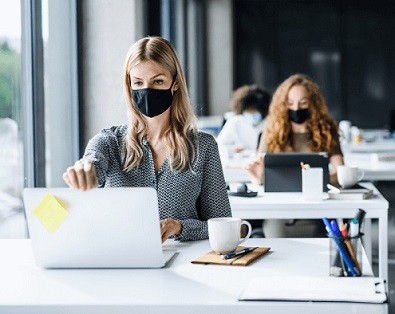
COVID-19 brought a pandemic none of us could have predicted which led to some inevitable changes in our day-to-day lifestyle. It changed how we looked at essential and non-essential goods and services, how we looked at safety at home, and even how we looked at our work lives. The pandemic has driven us all together in some ways and driven us apart in others. YCSPL‘s work lives saw a massive shift towards the work-from-home setting which was usually not an option in millions of workplaces across the globe. The only easy thing about this transformation in our idea of an office in our psyche is that it is strenuous for all of us, together.
While most of us were trying to embrace the new normalcy of remote working and an unexpected lockdown, there are major changes going on in the understanding of the role of an office in a workplace. Elimination of the traditional office design has made leaders all across distinct industries work on reimagining how workspaces can be run and how work can be done. It was surprising how quickly we all adopted zoom, skype, google meet, and different chat rooms as a substitute for in-house office discussions. Virtual workspaces were immensely beneficial for so many companies that they are planning on continuing with them even after the pandemic is over.
Before the catastrophic pandemic, the traditional and time-tested way of working in a physical office alongside the whole team was believed to be crucial for productivity and accountability. So many organizations were not flexible with work-from-home policies because of this rigid belief. The pandemic has opened the doors for employees on the work-from-home front but at what cost?
Coping with a global pandemic is a challenge that we were certainly not ready for but we are tackling its wrath graciously. Throughout the course of the lockdowns, organizations are adapting to the virtual workspaces to ensure that the paramount and prime processes are running smoothly by simply fashioning a remote workspace out of the existing one. This might have worked well for numerous companies but it hasn’t worked out for all since all organizations can not fully function remotely. The pandemic has led to a complete reconstruction of office spaces and will leave an ever-lasting imprint on how work is done in most organizations.
Looking at the glass half full, the pandemic has opened the gates to new and inventive business opportunities as well. Since most of the workspaces are now virtual, an employee doesn’t have to be in the same location where the organization is located. This is certainly good news for employers as well as employees. Employees can work at their dream jobs without the dread of relocation and employers can hire the perfect employee without bearing extra costs. After the pandemic is over, companies can reconstruct how they function and redesign roles that can be or cannot be done remotely. There are a lot of jobs that are only possible on-site and others that do not require an employee to come to the office at all or require the employee to come only for important business meetings and client calls.
We are all battling with this atrocity one way or the other but there are ways we can make most of this hardship. Now is the time for organizations to reinvent, restructure, and rebrand themselves, on the inside as well as on the outside. This pandemic was a deadly reminder of the flaws of our ways, especially in corporate settings with COVID-19 taking a toll on global mental health. This calls for active measures by the leadership of organizations to ensure that their employees are seen, heard, and understood while establishing an office that is both productive and a safe space.
Change becomes the most dynamic, powerful source of progress you have

